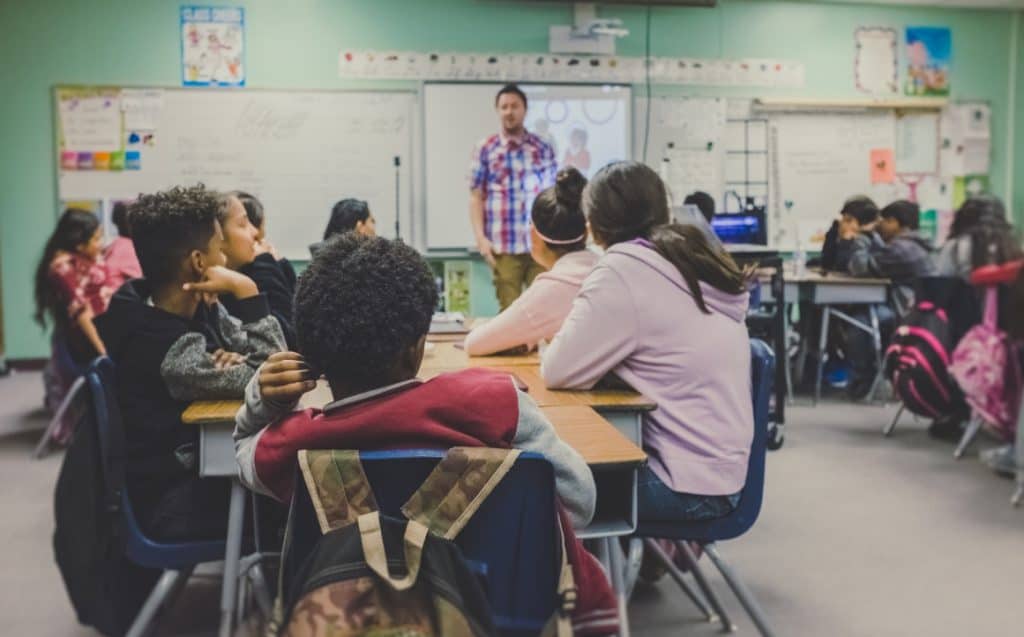Four Steps to Improve MOOC Value for K12 Teachers
How to increase educators’ engagement in MOOCs by empowering them and addressing their needs and concerns.
Following on my last contribution to the Class Central’s MOOCReport identifying K12 teachers as active and desirable MOOC participants, this article details how MOOC-makers might increase their course engagement for educators seeking professional development (PD) opportunities. After consulting a varied group of practitioners and researchers–as well as pulling from my own experience–I was impressed with the high-level of agreement on how MOOCs could become even more useful for K12 teachers. The resulting 4 recommended steps described below begin with the lowest hanging fruit (1) to the highest level of effort (4), and they all begin with the letter “E” (for Educator, of course!).
- Embrace
- Encourage
- Extend
- Engage
I. EMBRACE teachers as valued MOOC enrollees
Take a look at your current MOOC messaging and promotion: are you using key words of welcome in your course description? Teachers will take a harder look at PD opportunities that include references to “STEM” (Science, Technology, Engineering, and Math), “STEAM” (i.e., STEM plus “Arts”), “Meeting state learning standards”, “Includes primary source materials,” and other such descriptors that signal to teachers that their interests are important. Susan Ridker, public middle school language and culture teacher in Wellesley, MA, says that she and her colleagues depend on these labels to guide their online research “towards institutions that understand my curricular needs and value my time as a professional.”
Does your MOOC align with content specialties relevant to elementary, middle, and high school learning? Many college level courses feature great images, videos and other materials that also fit into primary and secondary classrooms. An introductory course on aerospace engineering by MITX offers compelling video featuring NASA officials using simple vocabulary and great visuals to explain the same mechanical and scientific principles that also drive most science fair rocket experiments (AKA “Lift” and “Drag”). Busy teachers and parents will find these fantastic resources faster if you direct them with K12 relevant descriptors and key words.
II. ENCOURAGE teachers to connect your MOOC content to their classrooms
As college prep becomes an increasingly important part of grades 6-12 curriculum, teachers are looking for ways to measure their lessons against the expectations and experiences of higher ed learning. Maria Janelli, Senior Manager of Online Teacher Education Programs at the American Museum of Natural History, recommends investigating NGSS (Next Generation Science Standards) as well as the organizations that support them. The National Science Teaching Association (NTSA) supports an extensive website for K-12 teachers, including links to resources and PD opportunities. Perhaps a link to your STEM MOOC belongs there?
Humanities teachers like Ridker also look for materials aligning with standardized learning frameworks, such as those created by her state of Massachusetts that require students to recognize, evaluate and communicate the value of original documents. As her colleagues develop new curriculum on middle school civics, they are keen to identify professional development opportunities that feature primary sources, qualified experts, and other authoritative resources such as those commonly found in many university MOOCs.
Janelli recommends organizing MOOC content in smaller amounts, like mini-modules, that do not overwhelm teachers with too much information all at once. She also promotes offering pre- and post- tests at the beginning and end of each section. Breaking down content into bite-sized amounts models good teaching practice and increases the chance for content to be retained. Janelli’s doctoral research on MOOC learning demonstrates that pre-testing learners, even before learning occurs, helps them retain information better than those who did not pre-test. So don’t hold back on those pop quiz opportunities!
III. Extend teachers’ ability to use MOOC materials directly in the classroom
Reorganizing your MOOC content as suggested above still does not guarantee that teachers will use your content exactly as written. Darren Milligan, Senior Digital Strategist at the Smithsonian Center for Learning and Digital Access and the director of the Smithsonian Learning Lab, runs an award-winning educational online resource that teachers love to use:
As we dug deep into the needs of teachers through a variety of user-centric evaluation methods, we learned pretty quickly that… (we) needed to create the Learning Lab in a way that … provided (teachers) with the tools necessary to quickly and intuitively customize (the resources) to the needs of their class, or even to the needs of individual students.
‘Providing customization tools’ might sound complicated but consider that the act of customization is performed by the teacher, not you! Your job is to make sure the content is offered in downloadable, modifiable electronic formats. Choose a file format that is free and easy for teachers to both use and modify for your sample lesson plans, transcriptions, translations and other text-based resources. If you use a proprietary format like .docx or .pdf, it is a good idea to let teachers know how they can alter the doc to suit their needs. Media files can get too big for teachers to download–keep the files small, use standard file formats like .MP3 or .MP4. It is a good idea to use a dependable long-term source for sharing/streaming your media content because teachers will go back to favorite files year after year.
Ridker also recommends that MOOC makers offer pedagogical tools used in the course materials as separate downloadable resources. Teachers are known to grab screens of content from online videos to create projected slides for class. Further, MOOC makers must keep in mind that some teachers may not have access to the Internet while teaching, so adding downloadable slide decks for corresponding videos is a great time saver for them, and a better viewing experience for students!
Most MOOC makers are directing their content to adult learners who can process information in English at a college level. Creating opportunities for younger and/or English-learning students to better understand your content will make your MOOC more accessible. Offering definitions of expert terms and lists of additional resources available in multiple languages and learning levels will be very welcome to teachers who are challenged to make these accommodations for their students. In a single public school classroom it is not unlikely to have more than a few English language learners as well as students who require more time or alternate ways to learn new information.
IV. ENGAGE with teachers and their challenges
Most MOOCs are designed to run effectively with minimal communication between teachers and learners, so making this step work will require “out-of-box” thinking. Keep in mind that K12 teachers are educational professionals with very little free time and a lot of experience to share. Start with dedicating just one discussion thread in your MOOC to teachers and encourage them to post questions and answers for you and each other. Lurking in teacher-led discussions I learn a great deal about the value of MOOC content, new ways to present it, how to improve the accessibility levels, and topics to consider for the next course.
Generally speaking, K12 teachers are great communicators: they love to learn from each other and share their knowledge freely. MOOC makers will greatly benefit from observing their online learning patterns and preferences. Consider also that teachers are exponential multipliers: when you engage one teacher you also inspire their students and families, and these connections expand year after year. Some day you might even see their graduates in your college classrooms!
Many thanks to:
Susan Ridker, public middle school language and culture teacher in Wellesley, MA
Maria Janelli, Ph.D., Senior Manager of Online Teacher Education Programs at the American Museum of Natural History , New York.
Vincent Falivene, IB public high school teacher in Long Island NY, currently earning his MsC in Digital Education at the University of Edinburgh
Tags







